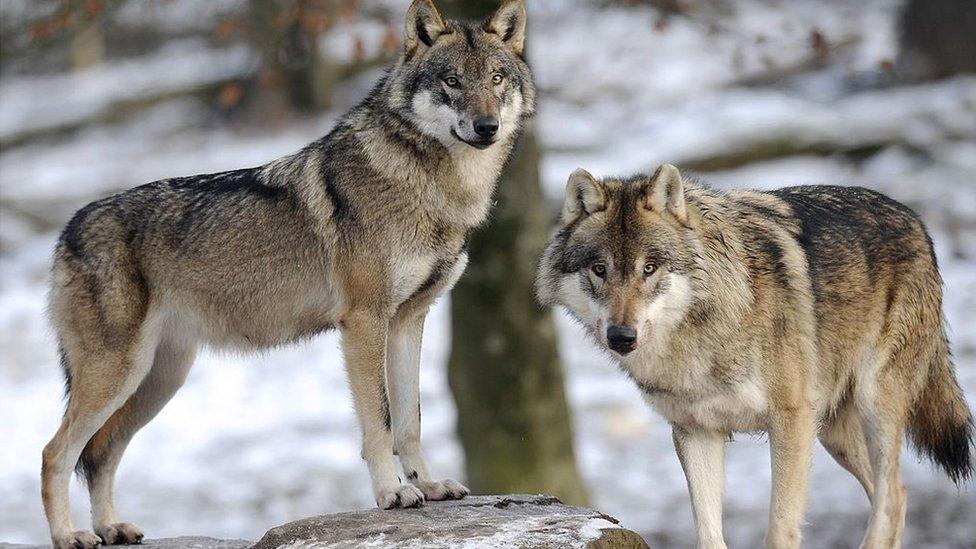Dogs come from two different wolf populations
- Published
- comments

Is your pet pooch secretly a wolf in dog's clothing?
Scientists have long suspected this to be the case but until now weren't sure exactly what kind of wolves our canine friends had come from, and at what point they moved from being wild animals to household pets.
But now studying ancient DNA from the past 100,000 years has been helping to shed some more light on the matter.
They've discovered that dogs come from at least two separate wolf populations - one in Asia and another in the Middle East or surrounding area.
`Another possible explanation could be that dogs emerged just once in one area but later bred with another wolf population, picking up additional wolf DNA.
Anders Bergstrom, is an expert in evolutionary genomics at the Francis Crick Institute and an author of the study which appeared in the Nature research journal.
He said: "We can't tell the scenarios apart. But we can say that there were at least two source populations of wolves."
How did they carry out the research?
An international team of researchers has wanted to learn more about the origins of dogs by looking into the grey wolf's past.
Dr Skoglund, the study's senior author said the plan was "build a big map of wolf ancestry, wolf genetics, around the time of domestication," and then to find out where the "dog puzzle piece" fits into "the big wolf jigsaw puzzle".
Archaeologists from 38 universities and facilities in 16 different countries donated bones and teeth from ancient wolf specimens that had been previously found in Siberia, Europe and North America.
Among the samples was an almost perfectly preserved cub Dogor, who had been locked for almost 18,000 years in the Siberian permafrost as well as a 32,000-year-old head of a wolf, also from the Siberian permafrost.

This perfectly preserved cub was discovered frozen in permafrost
The scientist drilled tiny holes in the specimens, collected samples of bone powder and extracted and sequenced the DNA. Then, the scientists compared the wolf DNA pattern they assembled to DNA from both ancient and modern dogs.
The researchers found that as a whole, dogs were more closely related to ancient wolves in Asia than those in Europe.
This suggested that the very first dogs came from Central Asia, but there were differences between different dog specimens.
But while early dogs in Siberia, East Asia, the Americas and north-eastern Europe appeared to have got nearly all of their genetic material from an ancient wolf population in Asia, early dogs from the Middle East and Africa also had significant ancestry from a second, unidentified wolf population.
This genetic material was most closely related to DNA from modern Middle Eastern wolves, the scientists found.
'Two wolf populations'
This made the scientists think they could have been descended from a second wolf population.
The study also allowed the team to learn more about ancient wolves, and their evolution. They traced a particular gene involved in the development of head and jaw bones, which is still present in almost every dog and wolf today.
The team doesn't know why this mutation became so common, but it may have to do with natural selection - also known as 'the survival of the fittest'.

Scientists say the negative image of wolves is not always justified
This is the theory that animals pass on traits which help them survive, so over time particular things which are an advantage become more developed in later generations.
Those who do not have those traits are less likely to survive, breed and reproduce, so therefore over time the trait that helps them to survive better lives on in the species in the future.
Previous research by others teams of scientists have reached different conclusions.
Last year research published in a scientific journal called the US Proceedings of the National Academy of Sciences (PNAS) concluded that the relationship between humans and dogs may have originated from wolves in ice age Siberia.
The next stage of the research is to try to further narrow down which wolves were the ancestors of modern dogs.
- Published15 June 2021

- Published27 November 2018

